
On 24 April 2013, 1134 garment workers in Savar, Bangladesh were crushed to death when their eight-storey factory complex collapsed. Workers had reported seeing cracks in the building’s walls days before the accident but factory bosses forced them to come to work. On the second anniversary of one of the worst industrial accidents in history, the Dhaka-based documentary photographer Wahid Adnan returned to Rana Plaza for Equal Times. Here’s what he found.
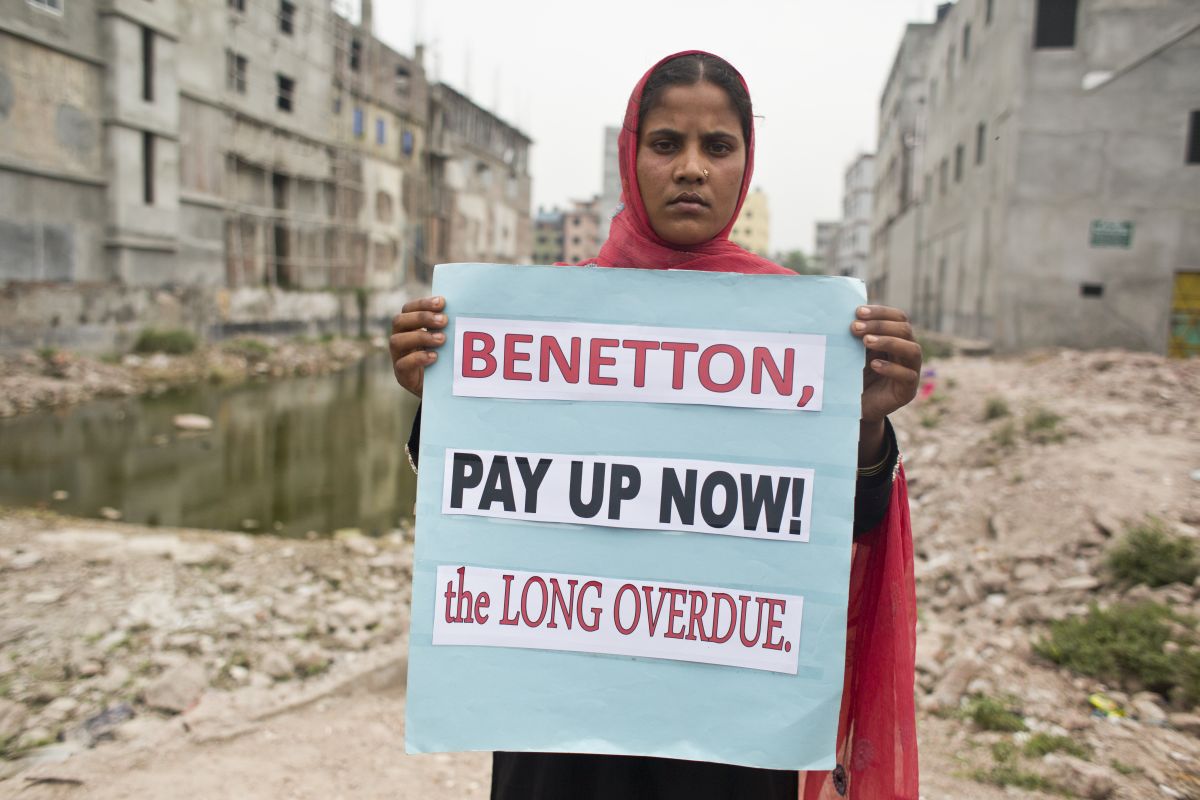
A garment worker holds a banner in front of the Rana Plaza site during a protest rally. Almost every week, activists from different NGOs stage protests against the delay of the compensation payments.
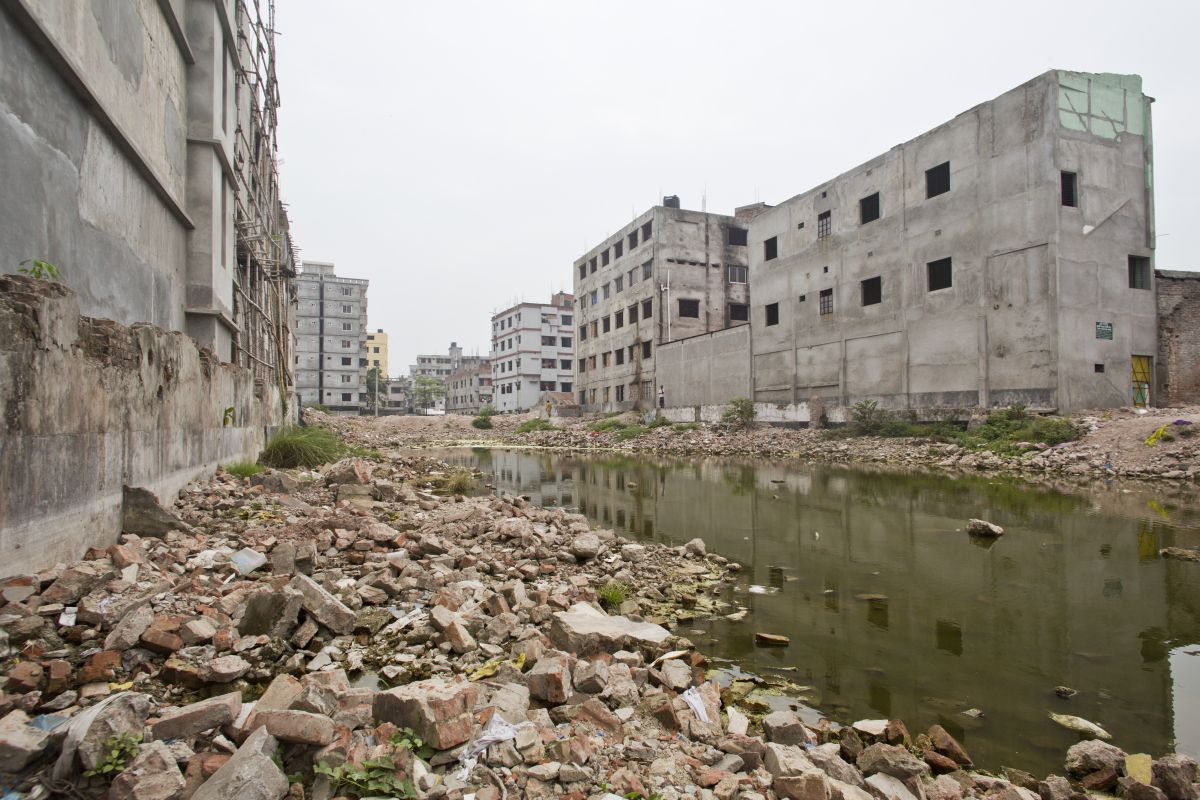
The site of the Rana Plaza collapse is now derelict but prior to 24 April 2013, five garment factories serving tens of global brands such as Benetton, Bonmarché, Primark and Walmart, employed some 5,000 people there. The complex was also home to a bank, some shops and a few apartments but it was not designed to host factories.
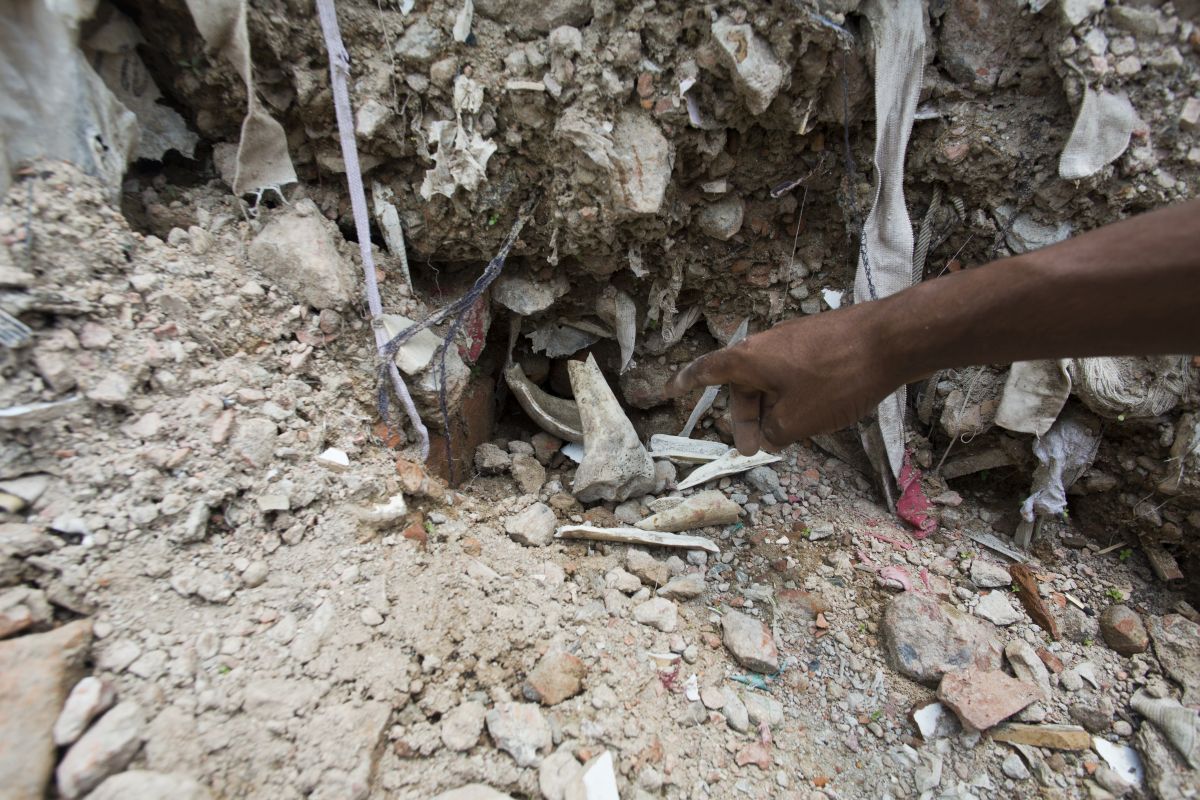
Human remains are still being found at the Rana Plaza accident site. Relatives of missing workers go to the site daily to try and retrieve the remains of their loved ones but they are refused permission by authorities who claim that the bones belong to cattle.
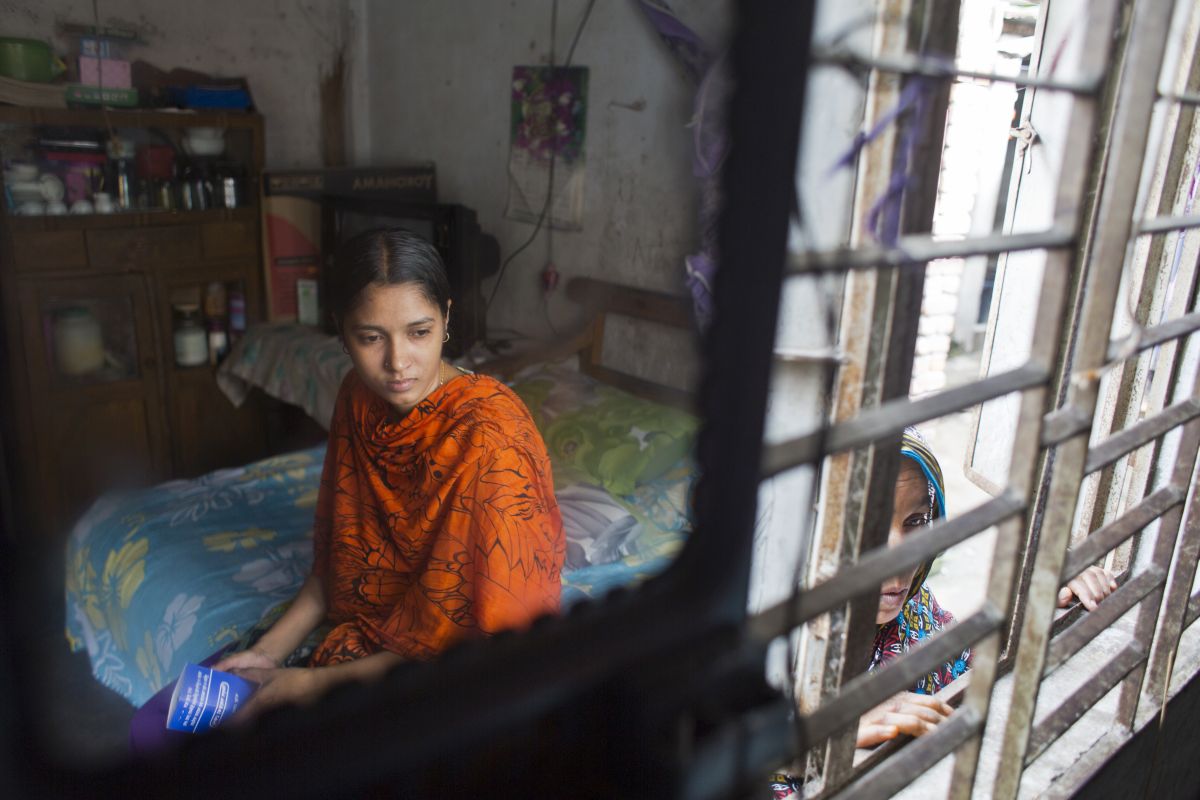
Twenty-year-old Asha is a survivor of the Rana Plaza collapse. She worked with her aunt on the 4th floor of Rana Plaza. Seeing the cracks on the factory walls the day before the collapse, Asha said she was scared to go to work but her aunt insisted. After the collapse, Asha was rescued from the debris but her aunt is one of the 1134 workers who died that day.
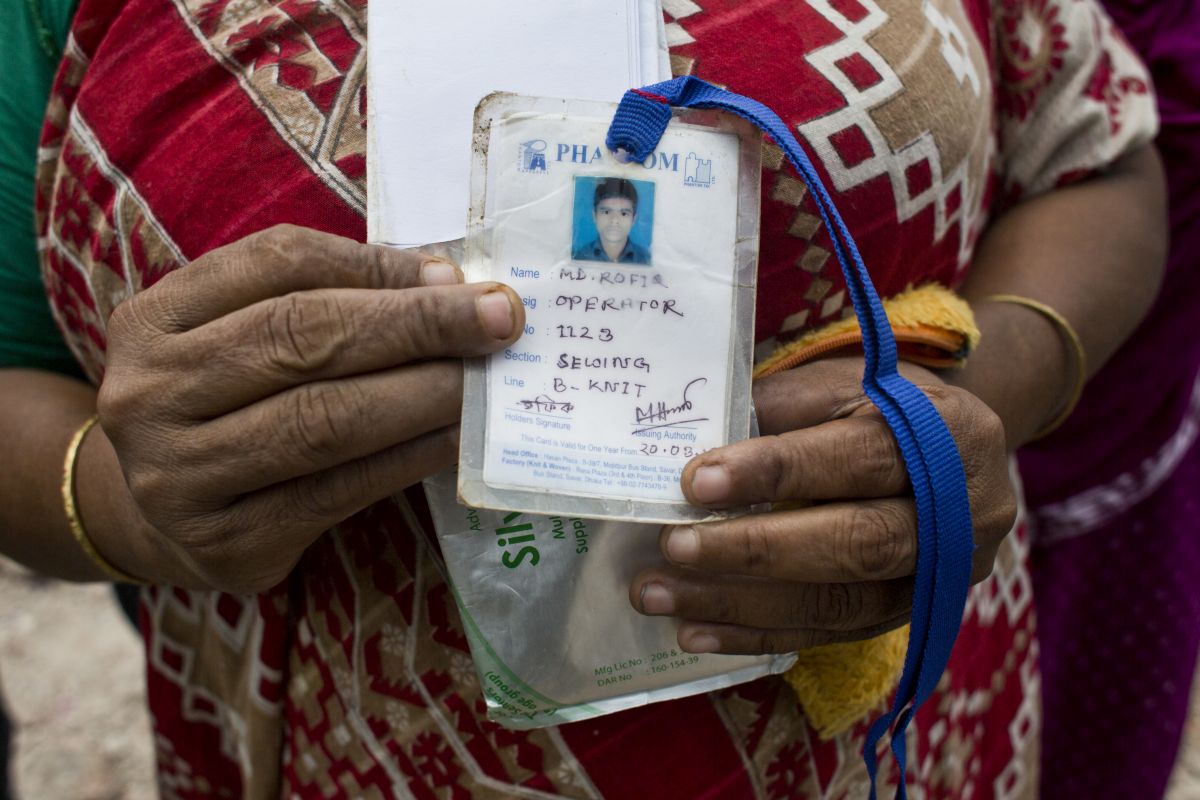
Firoza Begum shows the ID card of her son, Mohammad Rafiq, who died in the Rana Plaza disaster. His dead body was found after 16 days. Firoza is yet to receive any compensation.
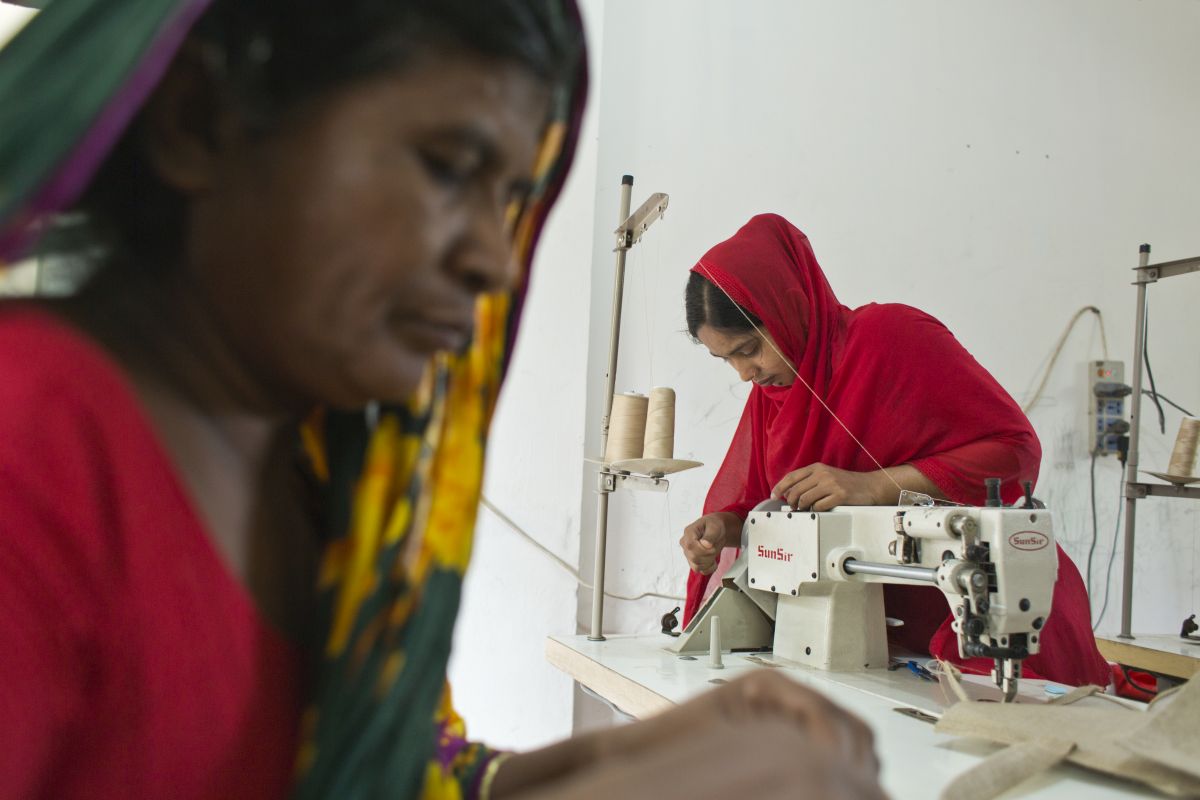
Mili Khatun (right) survived the collapse of the Rana Plaza building complex but her husband did not. Mili and four other survivors now work in a worker-owned garment factory in Savar called Oporajeo.









